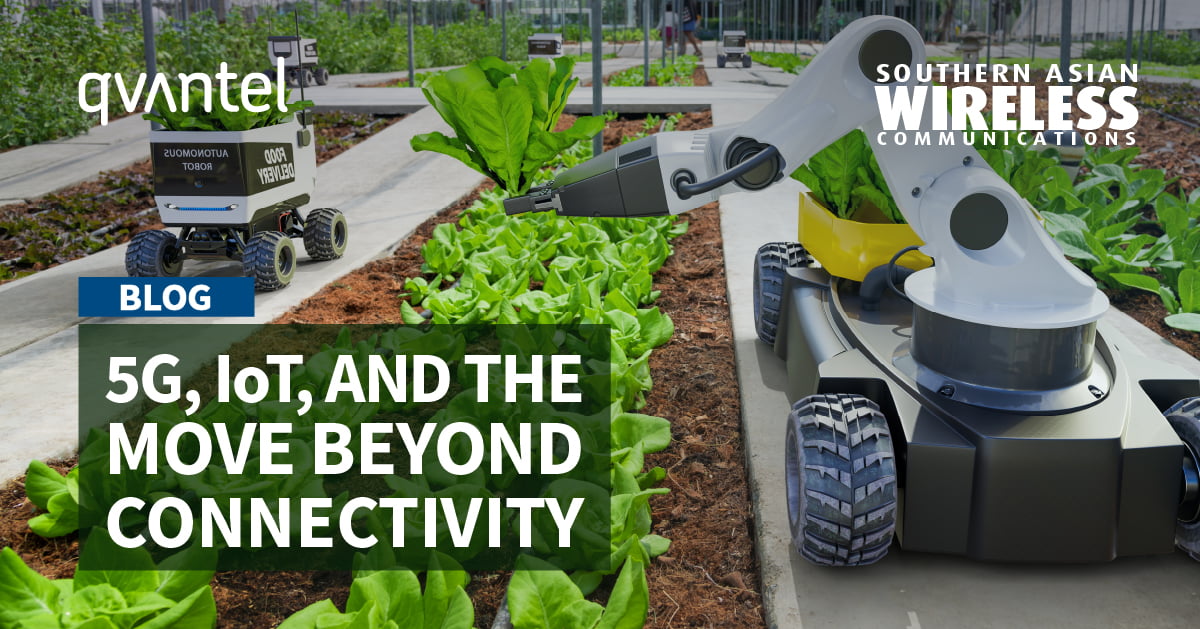
This article was first published in Southern Asia Wireless Communications.
In Southeast Asia, 5G is starting to be rolled out and several operators have even launched 5G standalone (SA) networks. For most existing users, 5G is just like a faster 4G – which is good, but only when 5G SA starts to be rolled out will communications service providers (CSPs) have an opportunity to take a much stronger position when selling IoT services and partnering with companies who provide IoT products.
At present, CSPs provide the connectivity that connects many IoT devices, but when those devices start to be connected by 5G SA, this will present an entirely new ball game for CSPs. They can now go beyond selling connectivity to selling experiences and assurance. 5G SA enables network slicing, which means the CSP can manage the quality of service on the network and monetise accordingly. This ability to offer differing levels of speed and latency for different partners puts the CSPs in a much stronger position in the 5G value chain, and thus enables them to take a more confident approach in entering new markets.
5G is about more than connectivity. A report by ABI Research forecast a very lucrative future for 5G-based business applications in Asia Pacific. 5G private networks are being linked to revenue growth from $732 million in 2022 to $13 billion by 2028. In anyone’s books, this represents a significant opportunity. Also, 5G network slicing will be a key differentiator and the monetisation impact will be significant. Indeed, AIB forecasts slicing-based revenues to be $12 billion by 2028.
AIB Research is not alone in forecasting the lucrative impact that 5G-based business applications will have on CSPs. In 2022, Nokia ran a CSP survey (5G Insights: The Path to 5G Monetisation) which asked where new 5G revenues were going to come from. A massive 60% of
CSPs expect most new 5G revenues to come from new B2B2X services. This highlights the need for CSPs to get very good at partnering and make it as easy as possible, through a partner portal, for partner companies to create offers that provide 5G connectivity to the IoT devices that they provide. This can include eSIM allocation and
management, enabling partners to activate (and pay for) and manage
eSIMs in their IoT devices.
CSPs are also starting to look at 5G and IoT to help them set up new businesses and enter new vertical markets. In the study by Nokia, CSPs listed the top five growth verticals that CSPs see the most potential in as smart cities, industry 4.0, telehealth, connected
vehicles and entertainment. CSPs are setting up companies to offer
digital healthcare whereby they can provide access to a network of medical professionals for video consultations but also provide diagnostic and monitoring devices connected by 5G. Smart cities are another major growth area for CSPs, who are working with cities to provide IoT-based solutions for city planning, traffic management and air quality management. The potential for IoT and 5G to combine to provide a wide range of connected devices and use cases that can open new revenue streams and make a positive impact on societies is huge.
5G will open new opportunities, but it will also drive change in how CSPs operate and run their business. A good example of this is how CSPs work with partners. With 5G SA, the value chain will be fluid. In some cases, CSPs will be the main point of contact for the customer and in others, they will be providing connectivity to a third-party service provider (e.g., a gaming provider or a healthcare provider), who will have a direct relationship with the end-user customer. The latter will become increasingly popular as CSPs start to offer CaaS connectivity as a service) where they can provide 5G connectivity to a wide range of companies (from broadcasters to event organisers) who need dedicated 5G connectivity for devices for a limited amount of time. This could be a sports club using drones to provide a 5G 4K broadcast of a football match. With SA 5G and network slicing, the CSPs can charge a premium for high quality of service and low latency and offer wholesale service level agreements as part of the offer.
Many 5G SA use cases are being trialled that involve IoT and could be described as mission critical. These include driverless vehicles, traffic lights in a smart city, real-time patient diagnosis from a connected ambulance and precision robotics in a manufacturing plant. These are
critical services and cannot be left to chance. Best-effort connectivity
isn’t an option here; only guaranteed network performance in terms of speed and latency will suffice. As such, CSPs can put a higher price on service level agreement (SLA)-backed connectivity for such services.
Going beyond delivering specific slices to support services, there will be cases where slicing is required to support events. An example
could be an eSports tournament where the gaming company organising the event needs two 5G slices: one for ‘VIP’ gamers and one for ‘basic’ gamers. Each is configured for different levels of latency, throughput, capacity, device volumes, locations and so on, according to the SLAs and customer experience index (CEI) parameters agreed on with the CSP. With 5G we will see more development of IoT applications. This will open new opportunities for CSPs to go beyond selling connectivity, which will speed up the 5G return on investment and open new doors for CSPs to innovate.
Martin Morgan
Head of Digital Marketing, Qvantel
